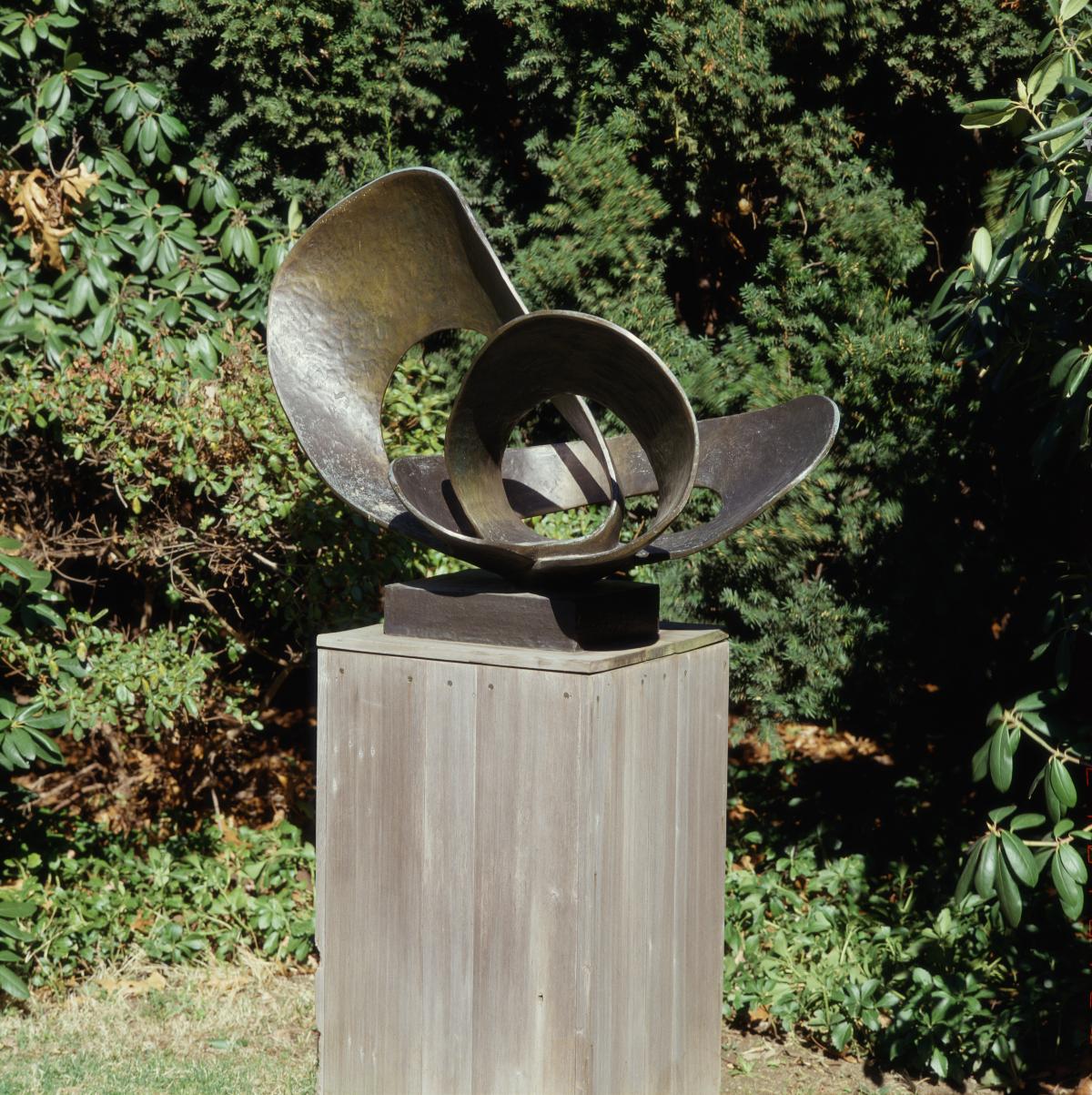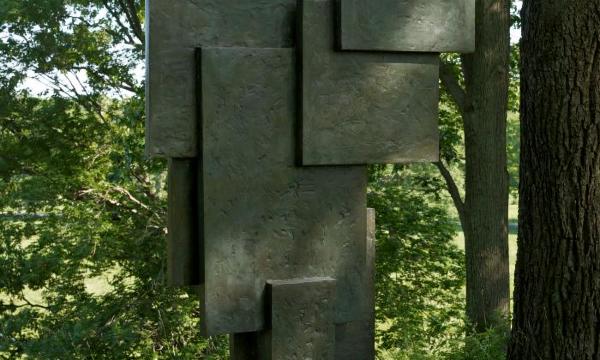On view

British, 1903–1975
Forms in Movement (Pavan), 1956 (cast 1967)
Bronze
29 1/2 x 43 x 22 in. (74.9 x 109.2 x 55.9 cm)
Gift of the Ralph E. Ogden Foundation
Barbara Hepworth © Bowness
Photo by Jerry L. Thompson
Barbara Hepworth is a seminal figure of modern sculpture. Working across media in a career that spanned more than fifty years, she is best known for her wood, stone, and metal sculptures, though she also created paintings, works on paper, and photographs. Many of Hepworth’s early sculptures were carved from wood and stone. In 1956 she began casting in bronze, a medium that enabled her to experiment with a greater variety of shapes, as well as with larger-scale and outdoor works. It also allowed her to create more sculptures in the form of replicative editions, which dovetailed with greater commercial success and recognition. In addition to numerous solo shows at galleries and museums, Hepworth was awarded the Grand Prize at the 1959 Bienal de São Paulo, represented Great Britain at the 1960 Venice Biennale, and, in 1961, was commissioned to create an outdoor work for United Nations Plaza in New York City, which still stands today.
Forms in Movement (Pavan) was created in three phases and exemplifies how Hepworth integrated her expertise as a carver into her work with bronze. The prototypes for Forms in Movement (Pavan) had armatures of expanded aluminum, onto which the artist built up plaster that she then carved to make the final form. She made another version in concrete in 1959, and in 1967 she cast an edition of seven bronzes from the concrete original. The dynamic sculpture, with the off-center placement and irregular shape of the three interlaced loops, also reflects the artist’s interest in dance (pavan is a type of processional dance from sixteenth-century Europe).
Hepworth was enthusiastic about showing her work in outdoor settings, where the geometry of their clear edges came into vivid contrast with nature’s curving shapes and lines. She said, “No sculpture really lives until it goes back to the landscape, the trees, air, and clouds.”
Forms in Movement (Pavan) was created in three phases and exemplifies how Hepworth integrated her expertise as a carver into her work with bronze. The prototypes for Forms in Movement (Pavan) had armatures of expanded aluminum, onto which the artist built up plaster that she then carved to make the final form. She made another version in concrete in 1959, and in 1967 she cast an edition of seven bronzes from the concrete original. The dynamic sculpture, with the off-center placement and irregular shape of the three interlaced loops, also reflects the artist’s interest in dance (pavan is a type of processional dance from sixteenth-century Europe).
Hepworth was enthusiastic about showing her work in outdoor settings, where the geometry of their clear edges came into vivid contrast with nature’s curving shapes and lines. She said, “No sculpture really lives until it goes back to the landscape, the trees, air, and clouds.”

